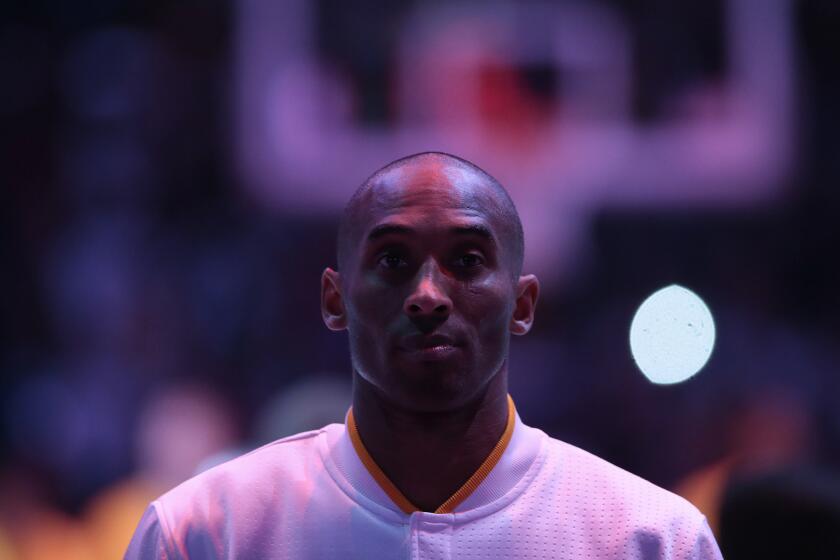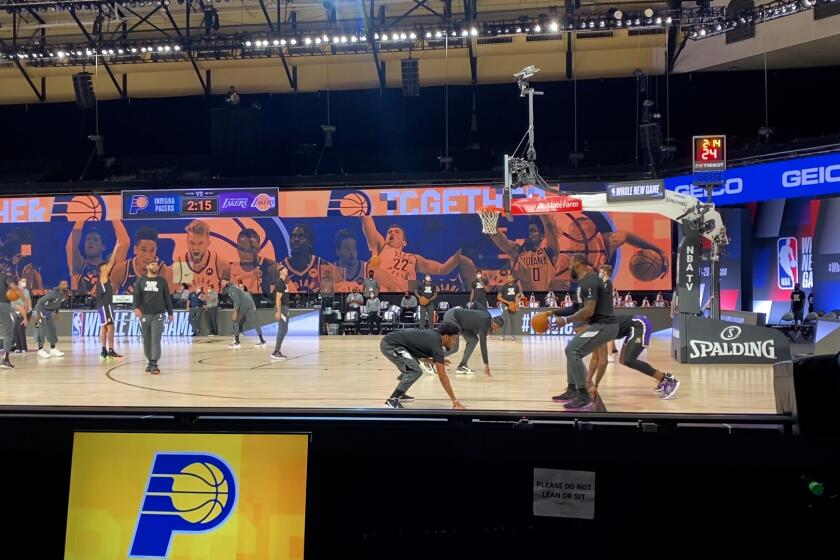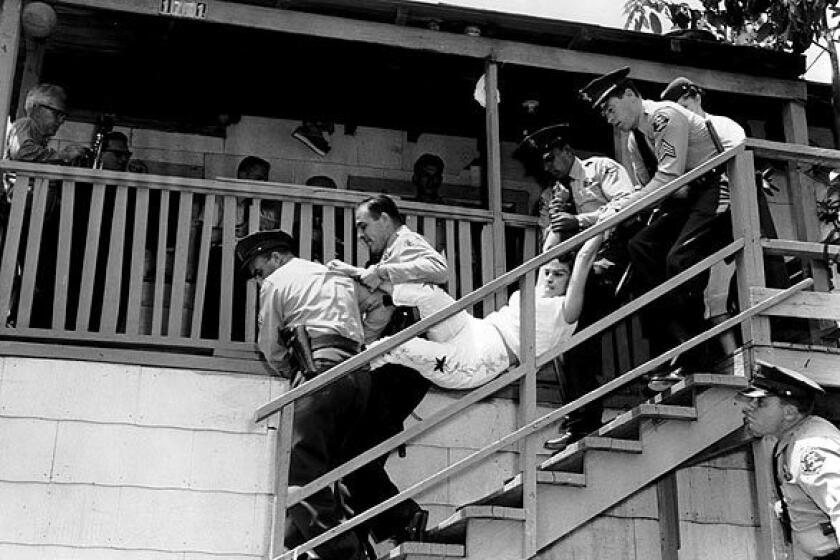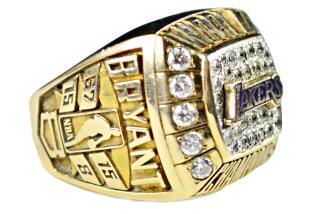The days of Shaq and Kobe: A riveting history of the legendary Lakers dynasty
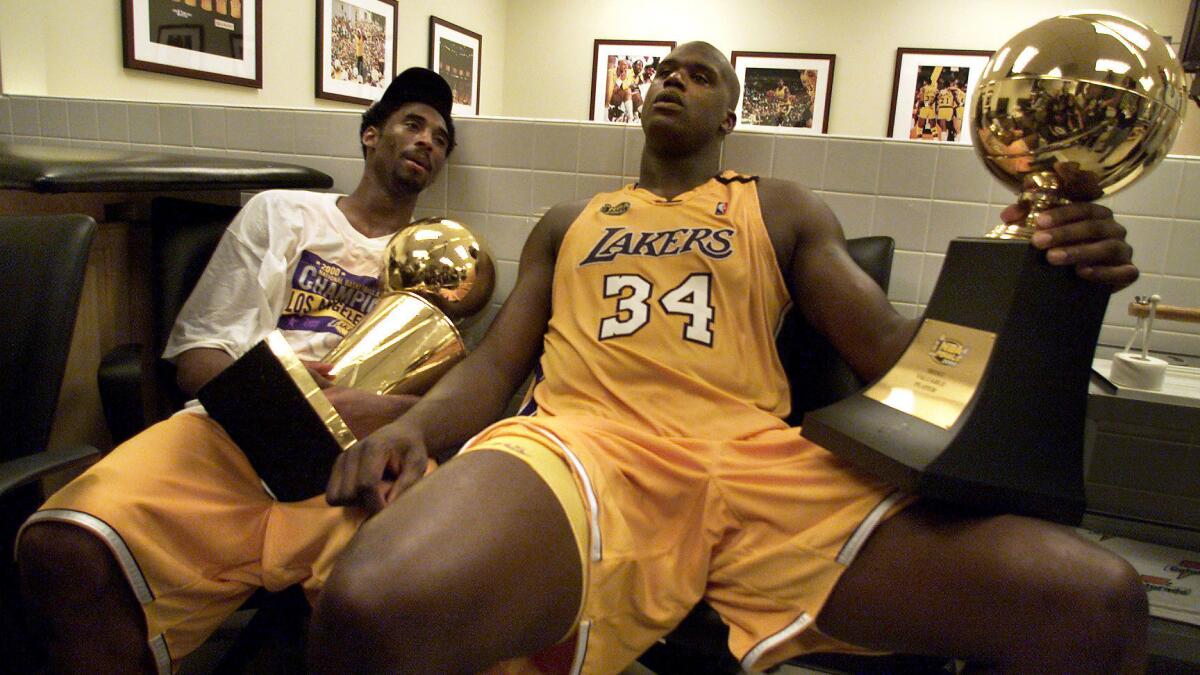
- Share via
On the Shelf
Three-Ring Circus: Kobe, Shaq, Phil, and the Crazy Years of the Lakers Dynasty
By Jeff Pearlman
Houghton Mifflin: 426 pages, $30
If you buy books linked on our site, The Times may earn a commission from Bookshop.org, whose fees support independent bookstores.
Kobe Bryant’s death on Jan. 26 in a helicopter crash that killed eight others, including his 13-year-old daughter, Gianna, sent shockwaves through the sports world and far beyond. In the immediate aftermath, it felt like it could be the defining story of 2020. Exactly one month later, the CDC confirmed the first case of non-travel-related COVID-19 in the U.S. with a patient in Solano County, Calif.
Life moves fast, as it did for Jeff Pearlman. There is no way the longtime Sports Illustrated writer could have known what was to come when he started working a few years ago on his spirited new book, “Three-Ring Circus: Kobe, Shaq, Phil, and the Crazy Years of the Lakers Dynasty.” But what an interesting time it is to revisit the insane roller-coaster drama of the early-aughts title teams.
Coming out as LeBron James tries to lead the Lakers to their 17th championship — from inside a masked-up Mickey Mouse bubble peppered with Faces of Zoom — “Three-Ring Circus” is a welcome nostalgia trip to the days when the ongoing squabble between an uber-confident “I got this” teenager and a gentle “No, I got this” giant was front-page news. (Also, there were newspapers.) Add in Coach Dreamcatcher, a roving band of colorful sidemen and end-of-the-bench journeymen and all manner of Hollywood celebs and hangers-on, wives and groupies (and a Ferrari with a fish tank) and you get one rollicking NBA tale.
The Lakers, Dodgers and Sparks were among the teams, players and others to honor former Lakers star Kobe Bryant on what would have been his 42nd birthday.
It isn’t all fun and games, particularly when it comes to Kobe Bryant, but it is a respite. Pearlman, a one-man cottage industry of books about famous troubled athletes, spoke with the Times about Kobe’s petulance, Shaq’s generosity, Phil’s puppet-mastering and his gnawing dread of the Mamba troll army.
Was your experience writing “Showtime,” about the Kareem-Magic-era Lakers, the impetus for tackling the Shaq-Kobe years in this book?
Not exactly. I moved to Southern California in between the books and, living here, you’d still hear so much about Shaq and Kobe, Kobe and Shaq, even though they hadn’t played together in more than a decade. It’s a fascinating era with clashing personalities and dynamics. Publishers always ask: Who can you hang a book on? Including Phil Jackson, the Lakers had three riveting characters.
I always thought the relationship between Kobe and Shaq deteriorated over time, but the book makes it clear there were problems from the jump.
Kobe skipped a couple of social NBA steps, the main one being: Pay deference to veteran teammates. He knew how good Shaq was, but he walked into the NBA believing he was better than most of the guys on the team. As a rookie. It rubbed guys the wrong way. Shaq was taken aback for sure.
Doesn’t the Staples Center locker room intrigue begin with Kobe not caring about having a relationship with Shaq?
Shaq is the one who wanted the big brother-little brother type of relationship. Watching and reading about the dynasty from afar, you would assume Kobe would be the more immature, more emotionally vulnerable of the two, because he came straight out of high school. It wasn’t the case. Shaq is a fun-loving guy and was hurt Kobe didn’t care about anything but basketball. I think Kobe had the better overall career, but I’d rather have Shaq’s. He enjoyed it a million times more.
Life inside the NBA’s closed environment in Orlando means constant surveillance and medical checks. And sometimes wine. Lots and lots of wine.
Kobe was generally right about Shaq’s lack of off-season dedication though, wasn’t he?
Yeah, but weirdly, I still think Shaq lived it the right way. At Sports Illustrated we would talk about which athletes were “in on the joke.” Barry Bonds never saw how ludicrous it was he got paid millions to swing a wooden stick at a ball in his pajamas. Shaq was in on the joke, so he spent his off-seasons having fun. Partying on a boat, traveling the world, living large and enjoying the spoils of all he worked for.
Kobe just viewed the whole thing as: You either kill or get killed and I want to be the killer. He dedicated his life to trying to be the best player in NBA history in a way Shaq never did. To be clear, I’m only talking about ’96-’04, but I wouldn’t want my kids to see the world in terms of winning being the only thing that matters. Youth is always wasted on the young.
Kobe seemed to revel in his cruelty to rookies. What was his bullying all about?
I don’t think Kobe was an inherently mean person, but in the early years of his career he was taking on different roles, trying on different suits of “this is how I’m supposed to be.” Don’t forget, he gave himself the Black Mamba nickname. He grew up in Italy, a foreigner in a foreign land, then returns to America, a foreigner in a familiar land, and jumps straight from high school to the NBA, a teenager in a league of adults. It was the heyday of Allen Iverson, Stephon Marbury, ’90s hip-hop, cornrows and baggy pants. He wasn’t a natural fit with the era.
Shaq has his moments of darkness — smacking Kobe at one point — but on the whole, he really is that dude, right?
I can’t tell you how many guys called him “the best teammate I’ve ever had.” Here’s a story that isn’t in the book: I met with him at the Turner Studios in Atlanta, and his daughter FaceTimed him. Shaq excused himself and turned away, but I heard his daughter talking about a friend’s mother who died. Shaq said he had to get back to the interview, but to let her friend know he would pay every funeral expense. It wasn’t for show; it’s who he is. Shaq has shortcomings and insecurities, like we all do, but I’ve never covered or read about a superstar who treats people better.
Fourteen months after a 19-year-old hotel worker accused basketball superstar Kobe Bryant of rape, the charges against him were suddenly dropped Wednesday, just days before his trial was to begin.
For all of the friction between Kobe and Phil Jackson, the break-up was short-lived, one season to be exact ...
There is a great book to be written about the maturation of Kobe Bryant, from the 2004-05 season to his horrific death. I don’t think Kobe liked playing with Shaq all that much — a supernova being forced to dump the ball into the big man. The style of basketball in the second championship go-round with Pau Gasol and Lamar Odom was much more to Kobe’s liking, but he was also not an immature kid anymore.
The book thoroughly covers the Kobe Bryant rape case. One fascinating wrinkle you note is that not one announcer mentioned it during the 2009 NBA Finals, but it certainly didn’t get whitewashed from his obituaries. Curious how you think it was handled after his death?
To be honest, I have mixed feelings. Kobe is the only one who didn’t talk to me for the book; I reached out multiple times. This is conjecture, but I imagine some of it has to do with not wanting to revisit it. It certainly belongs in his obituary. It’s part of his life story, and an obit is a news account. Right after his death, though, some in the media wanted a reckoning over whether Kobe was a rapist right now. People had the right to feel sad and process his death however they needed to. He was a towering icon in Los Angeles. A man who died in a terrifying crash with one of his daughters, leaving behind a wife and his three other young girls. Maybe give it a few days before hopping on Twitter and demanding people pick a side.
Are you concerned about how Kobe’s legion of stans will respond to “Three-Ring Circus?”
The book is about a frozen capsule in time, and I’m generally amazed by Kobe’s growth on and off the court after 2004. I was crushed when he died. Intellectually, I hope fans understand I wrote it before he died, but given the social media buzzsaw, I’m definitely nervous about it.
Eric Nusbaum’s “Stealing Home” follows a family displaced from Chavez Ravine, where Dodger Stadium was built.
More to Read
Sign up for our Book Club newsletter
Get the latest news, events and more from the Los Angeles Times Book Club, and help us get L.A. reading and talking.
You may occasionally receive promotional content from the Los Angeles Times.
